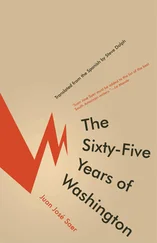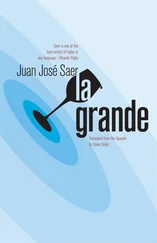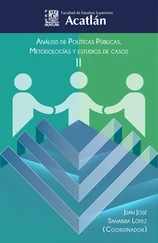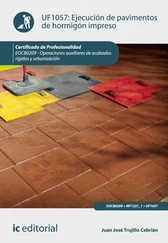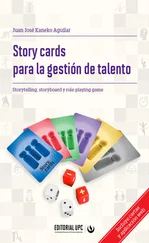Juan José Saer - Scars
Здесь есть возможность читать онлайн «Juan José Saer - Scars» весь текст электронной книги совершенно бесплатно (целиком полную версию без сокращений). В некоторых случаях можно слушать аудио, скачать через торрент в формате fb2 и присутствует краткое содержание. Год выпуска: 2011, Издательство: Open Letter, Жанр: Современная проза, на английском языке. Описание произведения, (предисловие) а так же отзывы посетителей доступны на портале библиотеки ЛибКат.
- Название:Scars
- Автор:
- Издательство:Open Letter
- Жанр:
- Год:2011
- ISBN:нет данных
- Рейтинг книги:5 / 5. Голосов: 1
-
Избранное:Добавить в избранное
- Отзывы:
-
Ваша оценка:
- 100
- 1
- 2
- 3
- 4
- 5
Scars: краткое содержание, описание и аннотация
Предлагаем к чтению аннотацию, описание, краткое содержание или предисловие (зависит от того, что написал сам автор книги «Scars»). Если вы не нашли необходимую информацию о книге — напишите в комментариях, мы постараемся отыскать её.
explores a crime committed by a laborer who shot his wife in the face; or, rather, it explores the circumstances of four characters who have some connection to the crime. Each of the stories in Scars explores a fragment in time when the lives of these characters are altered, more or less, by a singular event.
Scars — читать онлайн бесплатно полную книгу (весь текст) целиком
Ниже представлен текст книги, разбитый по страницам. Система сохранения места последней прочитанной страницы, позволяет с удобством читать онлайн бесплатно книгу «Scars», без необходимости каждый раз заново искать на чём Вы остановились. Поставьте закладку, и сможете в любой момент перейти на страницу, на которой закончили чтение.
Интервал:
Закладка:
Also present were the precedent chaos, the coincident chaos, and the future chaos. The three coincided, actively or potentially. The precedent chaos coincided with the organization suffered by the cards in the shoe, and rematerialized as the coincident chaos represented by the cards that were piled face up next to the shoe, which it coincided with. And this chaos would undergo a transformation similar to the first — when the dealers shuffled the cards, organized them into several even piles, and combined them, ultimately, into a single column of two hundred and sixty cards before dropping them into the shoe. The precedent chaos was present in this act, as the organization of the shoe was determined by it. The future chaos, at once active and potential since it took shape from the chaos of the cards piled face up next to the shoe — and therefore consisted partly of this chaos and could only come from it — would ultimately be indistinguishable from this — the precedent — chaos and from the coincident chaos, since chaos is in itself indistinguishable and essentially singular. Each chaos was also the future chaos, and the arrangement of the cards and the transitory present of the deal were also part of the future chaos, since they would soon become it. And the three mutually coincident states of chaos, meanwhile, were coincident with the arrangement of the shoe, the present of the deal, and all the intersections of the past and the future that had been, were, or would be coalesced in it.
Each time the shoe resets, having passed through the original chaos in which the dealers’ distracted hands spread the cards in random piles over the table, a new arrangement is produced. As many possibilities for its arrangement exist as there are possibilities for arrangement among the two hundred and sixty cards, each one a fragment of the original chaos submitted to an organization by the reflexive movements of the dealers’ hands. As I see it, no arrangement could be identical to another, and even if in two of the arrangements the cards fell in the same order, the first arrangement still wouldn’t be the same as the second, and for this reason: it would be, in effect, another . On the other hand, it wouldn’t seem the same. There wouldn’t be a way to verify it. The task — a tedious and hopeless waste of time — would be dismaying from the start. And in any case, only the initial arrangement would resemble the other’s. Which is to say, only a given pathway or portion of the process could resemble a pathway or portion of the process of the other arrangement.
Because the other pathways or parts wouldn’t be the same. For that to happen, the following similarities would have to occur: first, the way the dealers shuffled would have to be exactly the same both times, and the way the cards were arranged would have to turn out exactly as before. A five of diamonds that appears in the shoe between a three of diamonds and an eight of clubs would need to come to occupy this location by the same itinerary as before — above a four of spades and a king of diamonds, under a queen of clubs, between an ace of hearts and a two of hearts, for example — something which, of course, is impossible to verify.
Also: every player dealt the five would have to choose the same in every case in each of the arrangements. Bearing in mind that there are players who tend to stand, and players who tend to hit sometimes and other times not, and players who tend to follow their gut when the cards are turned over, the possibility of repetition becomes practically impossible.
Finally: the pile of cards face up next to the shoe would have to be a arranged in the same way as the pile formed by the discarded hands of the previous arrangement. But that arrangement, because no one controls it, is impossible to verify.
In baccarat, ultimately, repetition is impossible.
The cards themselves are also particular. They’re at once significant and insignificant, and what they signify isn’t always the same. We could say that what they signify varies depending on the context in which they appear. The cards are significant on the obverse and insignificant on the reverse. The pattern on the reverse side, identical on all of them, does not signify anything; or at most one thing: its insignificance in respect to the significance of the obverse. In this way, the insignificance of the reverse signifies something.
The significance of the obverse, meanwhile, varies. The distinct values, one, four, nine, six, zero, change significance according to their location. An ace changes significance if it’s with an eight or with a nine. With an eight it signifies zero, with a nine it signifies nine, with an ace, zero. In a way, zero, not nine, is the highest number. Zero is the principal: a nine is a nine from the reference point of the zero — you get nine when the nine incrementally approaches the zero it started from. And the nine, meanwhile, borders the zero. After nine there’s nothing, except zero; and zero, after nine, is a complete reset, from which you have to start counting again.
For example, a seven and a six, combined, usually make thirteen. In the game of baccarat they only make three. Counting up, six, seven, eight, nine — I’ve taken three from the seven, added it to the six, and made nine. After that comes zero, not ten. When I’ve reached the highest number, nine, the count rests and I go back to zero. I’ve used four from the seven and have three left. These three start counting from zero and end up at three. Every significance of the obverse signifiers is filtered through the principal signifier, which is zero, the ultimate number in baccarat. It is the reference point for the highest value, nine, and every time the numbers go beyond nine they must return to zero again, erasing everything up to that point and starting over again.
In short, this is the objective aspect of the game. The subject aspect is also important, but first the place where the game is played needs to be described.
It’s a long, oval table, with two shallow indentions in the middle, opposite each other, their convex sides facing. Inside these indentions sit the dealers, facing each other, above the players, on chairs raised on platforms. The shoe is located in the center of the table. In some places it moves around from one player to another, passed to the right as the player finishes the round. Here it stays in the center of the table, and one of the workers deals the cards from the shoe, first one to the player, then one to the banker, then another to the player, and then another to the banker. The player receives his two cards first, and doesn’t know what the banker has drawn. The whole game takes place on the table, around which, at the perimeter, the players sit. Everything that happens beyond the table, in the space surrounding it, does not affect the game. The cards are turned on the table. This is the place where the game is played. In the city, on any night, eight or ten baccarat tables are active in different places. What happens in one place, at one of the tables, bears no significance on any other. Every place is self-contained, so to speak. Even when two tables are pressed together, what happens at one doesn’t signify anything for the other. Each table has its own order of events with their own rhythm, duration, value, and significance.
Someone observing three tables at once would notice these different states. Even if they were to start and end at the same time, the development would be different. After the first hand, the three would be at different points of development. At the first table, a delay in the betting, just as an example, would slow down the game. At the second, a tie slows things down. At the third, a quick game, in which either the player or the banker are first dealt either an eight or a nine — what’s called a natural —and no further cards are drawn, would have the third table already dealing the second hand while at the first table the first hand hasn’t even been dealt and at the second the tie has forced the players to bet again.
Читать дальшеИнтервал:
Закладка:
Похожие книги на «Scars»
Представляем Вашему вниманию похожие книги на «Scars» списком для выбора. Мы отобрали схожую по названию и смыслу литературу в надежде предоставить читателям больше вариантов отыскать новые, интересные, ещё непрочитанные произведения.
Обсуждение, отзывы о книге «Scars» и просто собственные мнения читателей. Оставьте ваши комментарии, напишите, что Вы думаете о произведении, его смысле или главных героях. Укажите что конкретно понравилось, а что нет, и почему Вы так считаете.

